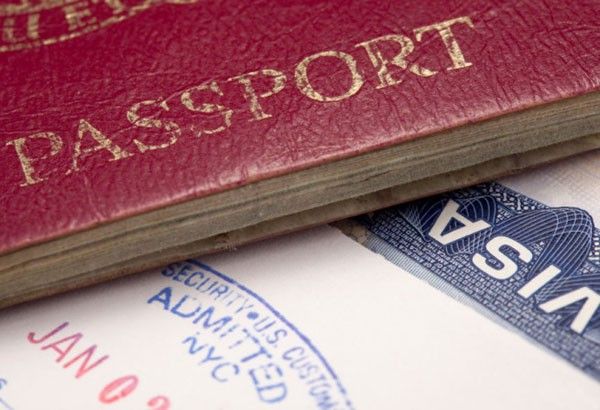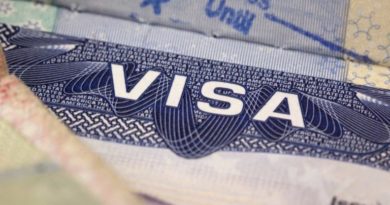IMMIGRATION: Green card based on occupation

IT’s official. The US economy doesn’t have enough workers.
The US Labor Department reports a shortage of workers to fill up 6.7 million job openings. But skilled workers and professionals overseas are not welcome to apply.
ADS by Cloud 9:
.
– SPACE RESERVE FOR YOUR ADVERTISEMENT –

.
Yet.
America First and Hire American workers remain the push buttons of the Trump administration.
Unless the trade war brings a recession and the Republican Party gets the courage to accept the fact that the 45th occupant of the White House is getting them booted out of 1600 Pennsylvania Avenue, foreign workers should steer clear of temporary work visas.
ADS by Cloud 9:
.
– SPACE RESERVE FOR YOUR ADVERTISEMENT –

Instead, foreign workers should take the permanent residency route: apply as immigrants (sponsored by employers based on long-term need) in the applicable employment-based categories.
Yes, there are jobs that are opening up faster than the others. But employers must have sufficient incentive to recruit from overseas. A 10-year projection reported by CNBC.com shows the fastest growing jobs in the US from 2016 to 2026.
Are the fastest growing occupations also the same vacancies that US employers and recruiters are having a hard time filling?
ADS by Cloud 9:
.
– SPACE RESERVE FOR YOUR ADVERTISEMENT –

The top 10 jobs that employers have a hard time filling are:
1. High-skilled medical, such as nurses, doctors and specialists
2. Scientists and mathematicians
3. Skilled trades, such as electricians, carpenters, machinists, mechanics, welders and plumbers
4. Engineering and architecture
5. IT computer specialists, such as IT analysts, software developers and programmers and database administrators
6. Executives
7. High-skilled technicians, such as health, telecommunications and environmental technicians
8. Transportation, such as drivers
9. Construction and extraction workers in mining
10. Community and social service workers, such as counselors, therapists and social workers.
Except for community and social service workers, the two lists validate each other. A third list sums up the top 10 jobs in the US that employers in the listed sectors may sponsor as immigrants and green card holder applicants
ADS by Cloud 9:
.
– SPACE RESERVE FOR YOUR ADVERTISEMENT –

Top 10 jobs in demand in the US overall
Skilled workers, especially in construction, are critically needed in both the US and the Philippines. The lack of skilled workers in this industry had been pinpointed by President Rodrigo Duterte as a major reason why his program of Build, Build, Build will just be half-way completed when his term ends.
ADS by Cloud 9:
.
– SPACE RESERVE FOR YOUR ADVERTISEMENT –

In addition to the top 10 jobs, the skilled trade jobs in high demand in the US are heavy truck driver, carpenter, plumber and electrician. The top 10 jobs are:
1. Personal care aide
2. Fast food prep and serving worker
3. Registered Nurses
4. Home health aide
5. Applications software developer
6. Janitor
7. General Manager
8. Material mover
9. Medical assistant
10. Waitpersons
Other than the manager and registered nurse occupations, the rest of the top 10 jobs in demand in the US requires employers to first obtain a certification from the US Department of Labor that there are no US workers available ready and willing for the job being offered. The process is called the temporary labor certification.
ADS by Cloud 9:
.
– SPACE RESERVE FOR YOUR ADVERTISEMENT –

Only after the specified lengthy, complex and expensive process can the US employer file the appropriate temporary work visa for a foreign worker, such as an aspiring OFW. The temporary work visa for these occupations is the H-2B (non-agricultural workers). For workers in the farms and agriculture, the H2-A visa is used.
Unfortunately, since January 2019, the US Citizenship and Immigration Services (USCIS) has banned OFWs from being sponsored. Yes, because of what the USCIS describes as immigration violations of employers and overstaying of sponsored H-2B Filipino workers, the Philippines has been taken out of the list of countries whose nationals may apply for H-2A and H-2B visas. This is the official USCIS link – https://www.uscis.gov/news/alerts/uscis-announces-countries-eligible-h-2a-and-h-2b-visa-programs-0
Providing more work visas for skilled and unskilled immigrants seems like an obvious solution to ease the labor shortage. But it’s also the solution Trump seems least inclined to take with one caveat: the US President and the Republican-controlled Senate agree on a merits-based migration provided family-chain-migration is cut in half.
ADS by Cloud 9:
.
– SPACE RESERVE FOR YOUR ADVERTISEMENT –

Employment-based US green card petition
For applicants without a qualified or eligible family member in the US, getting a green card is still possible through the employment-based (EB) categories. The current visa allocation for EB visas is 140,000 a year. RAISE Act intends to raise this yearly limit. The yearly total is distributed among five categories.
.
– SPACE RESERVE FOR YOUR ADVERTISEMENT –

EB1 Priority workers: 40,000, or 28.6 percent of the worldwide employment-based preference level, plus any numbers not required or used in the EB4 and EB5 preferences.
EB2: Members of the professions holding advanced degrees or persons of exceptional ability: 40,000, or 28.6 percent of the worldwide employment-based preference level, plus any numbers not required or used by the EB1 preference.
EB3: Skilled workers, professionals, and other workers: 28.6 percent of the worldwide level, plus any numbers not required by first and second preferences, not more than 10,000 of which to “other workers.”
EB4: Certain special immigrants and religious workers: 10,000, or 7.1 percent of the worldwide level.
EB5: Employment creation: immigrant investors with a minimum of $500,000 to invest or had invested in the US. Allocation is 10,000, or 7.1 percent of the worldwide level, not less than 3,000 of which reserved for investors in a targeted rural or high-unemployment area, and 3,000 set aside for investors in regional centers.
ADS by Cloud 9:
.
– SPACE RESERVE FOR YOUR ADVERTISEMENT –

Employers needed or not
The EB1 is further subdivided into:
1. An alien with exceptional ability in the sciences, arts, or business who will substantially benefit the national economy, cultural or educational interests, or welfare of the United States. Job offer not required.
2. An internationally recognized outstanding professor or researcher with at least three years of experience in teaching or research in academe. Job offer by private employers needed.
3. An alien primarily employed in a managerial or executive capacity for at least one year by a firm or corporation or other legal entity and who seeks to enter the United States to continue working for the same employer, or a subsidiary or affiliate, in a managerial or executive capacity. A US-based employer is needed.
ADS by Cloud 9:
.
– SPACE RESERVE FOR YOUR ADVERTISEMENT –
EB2: For members of the professions holding an advanced degree or an alien with exceptional ability in the sciences, arts, or business. A job offer may not be required if the practice of the applicant’s profession will be to the national interest of the United States.
EB3: Unless the job offer is for an occupation that is listed in the US’ shortage occupations, a US employer must first obtain a permanent labor certification from the US Department of Labor (DOL). The DOL requires the US employer to prove that it has conducted recruitment efforts but was not successful in getting qualified US citizens, permanent residents or those authorized to work for the job being offered to a foreign worker.
ADS by Cloud 9:
.
– SPACE RESERVE FOR YOUR ADVERTISEMENT –

This permanent labor certification applies to employers seeking to sponsor a professional, skilled worker or other workers (OW).
EB4: Special immigrants, including religious workers and physicians. Instead of the I-140 form, the applicant uses Form I-360.
EB5: Green card for immigrant investors — foreign nationals who have invested or are actively in the process of investing $1 million (or $500,000 in targeted employment areas) in a new commercial enterprise that will benefit the US economy and create at least 10 full-time positions for qualifying employees. These foreign nationals are also called “EB-5 immigrant investors” because they are in the employment-based fifth preference visa category.
An employer sponsoring an EB1, EB2 or EB3 worker files the I-140 petition form with the current and applicable USCIS office. Special immigrant applicants use the Form I-360. Immigrant investors use the Form I-526, Immigrant petition by alien entrepreneur.
ADS by Cloud 9:
.
– SPACE RESERVE FOR YOUR ADVERTISEMENT –

Upon receipt of a complete petition package, the USCIS issues a notice of receipt. The receipt notice is also called the “filing date” or priority date. A USCIS receipt number is assigned. The USCIS may request for more evidence before deciding to either refuse or approve. Upon approval the petition is then forwarded to the National Visa Center (NVC) for archiving or processing.
A petition is archived if the priority date is not yet current. A petition becomes current if there are sufficient visas available for the country where the applicant is a national of. This is called the per-country allocation and foreign state chargeability.
ADS by Cloud 9:
.
– SPACE RESERVE FOR YOUR ADVERTISEMENT –

Visa processing and issuance
Each visa issued is deducted from a country’s yearly allocation. The actual visas issued to each foreign national is dependent on whether unused visas in any EB category is returned to the visa pool for reallocation.
For fiscal year 2019, the per country allocation was set at 25,754. The fiscal year is the accounting period for the US federal government which begins on October 1 of the current year and ends on September 30 of the following year.
Starting in fiscal year 2016 (Oct. 1, 2015), the State Department issues two charts: the final date and the date of filing charts. The final date chart refers to priority dates that are current i.e., visas are available. The filing date chart simply means that the applicant may start visa processing so that when his or her priority date becomes current, the applicant may then proceed to the consular interview.
Unlike the family-sponsored immigrants, EB1-EB3 applicants are not required to submit an affidavit of support. Instead, the applicant must present evidence of continuing offer of employment from the sponsoring employer.
Substitute petitioner/employer. In contrast to the family-based categories, however, the “death“ of a petition may be revived by another employer (“successor in interest)” provided the requirements for the specific EB preference category remain the same.
If the applicant is in the US, he or she may be eligible to apply for adjustment of status from another visa category. Caution: The beneficiary of an approved I-140 petition who entered or was admitted into the US in another category, e.g., a non-immigrant B-1/B-2 visitor visa, student or work visa should carefully determine if he or she would want to apply for a visa instead of applying for adjustment of status.
Let the green card game begin.










ADS by Cloud 9:
.
– SPACE RESERVE FOR YOUR ADVERTISEMENT –